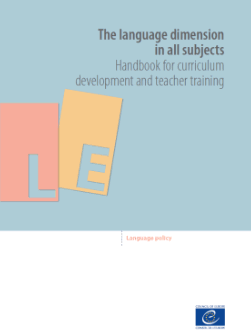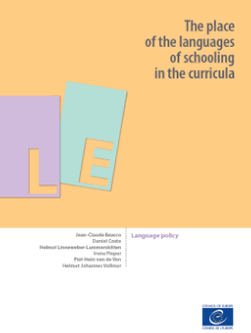3 items found for "Show all items"
The language dimension in all subjects - A handbook for curriculum development and teacher training |
 |
This handbook is a policy and working document which promotes convergence and coherence between the linguistic dimensions of various school subjects.
It proposes measures to make explicit, in curricula, pedagogic material and teacher training, the specific linguistic norms and competences which learners must master in each school subjects. It also presents the learning modalities that should allow all learners, and in particular the most vulnerable among them, to be exposed to diversified language-learning situations in order to develop their cognitive and linguistic capacities.
Download document |
Edit
The Handbook at a Glance |
This document is an executive summary of the Council of Europe
publication, The Language Dimension in All Subjects: A Handbook
for Curriculum Development and Teacher Training. It does not
attempt a chapter by chapter summary of the Handbook but
presents the central arguments under five key themes: the
language dimension in subjects; policy initiatives to promote quality
and equity; view of language; subject issues and teacher
development
Download document |
Edit
The place of the languages of schooling in the curricula |
 |
All knowledge building in the school context involves working with language. The purpose of this text is to suggest a general approach enabling different levels of specification of these language dimensions to be classed in transversal descriptive categories.
It then presents studies putting this approach into practice for four school subjects, with reference points: history, literature, mathematics and sciences.
This work is intended for curriculum developers and authors of textbooks, designers of tests, teacher trainers, teachers themselves, and especially those of subjects sometimes mistakenly described as “non-linguistic”.
Download document |
Edit